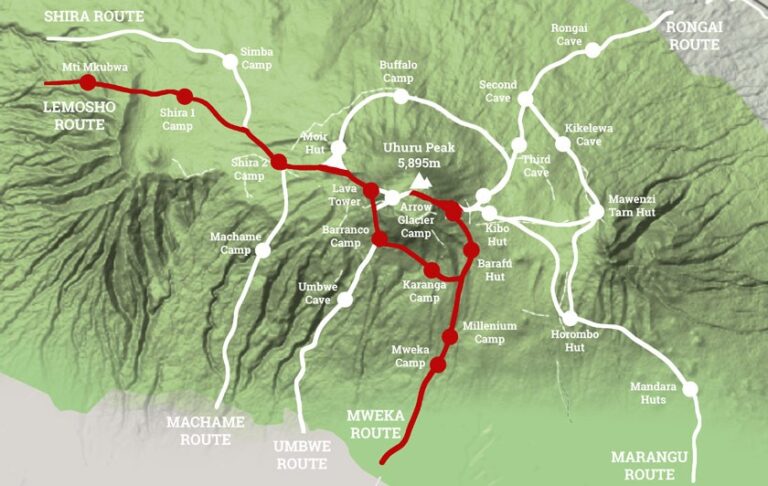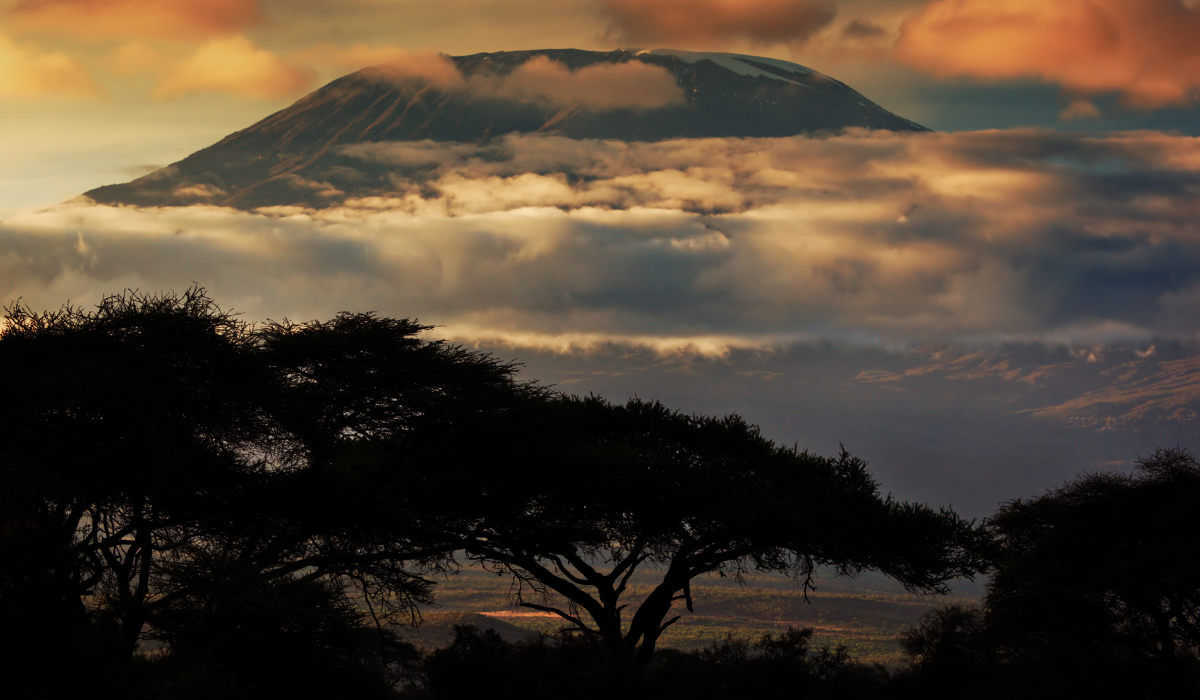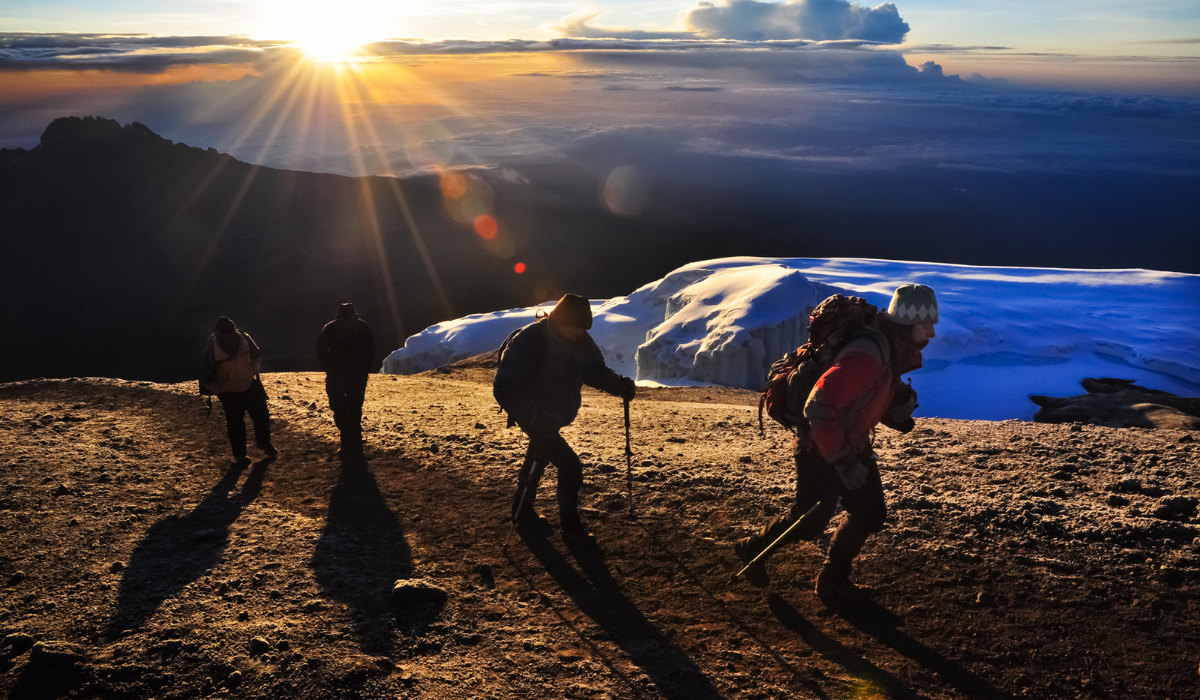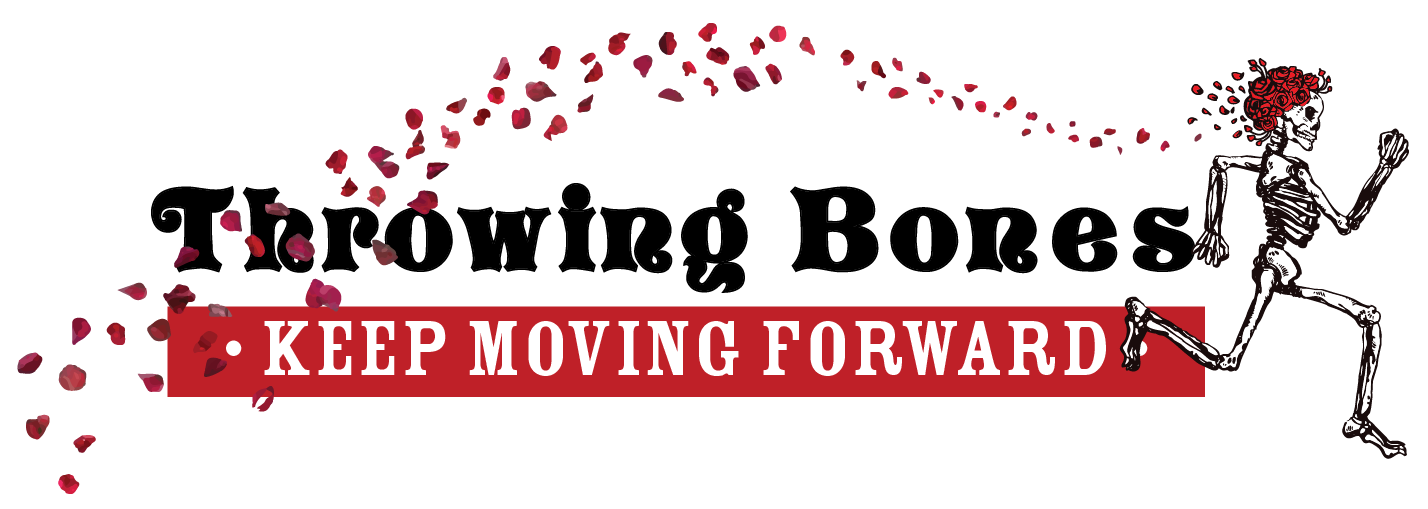Cancer Active Climb Kilimanjaro
October 14th - 24th, 2024
The Climb Begins:
Cancer Active Adventure Climb Series
Our FIRST Cancer Active Climb will be to Kilimanjaro on the Lemosho Route.
Prepare to be captivated by the sheer beauty of Kilimanjaro through the Lemosho route – renowned as one of the most picturesque pathways to the summit. Our journey begins from the western side, where you’ll find yourself immersed in the lush rainforest, a vibrant tapestry of nature. As you ascend, the landscape transforms, leading you to the enchanting world of wildflowers in the Heath ecosystem.
Approaching Kilimanjaro from the west grants you the opportunity of crossing the Shira Plateau, a place of unmatched natural grandeur. From here, your journey unfolds as you traverse the mountain along the southern circuit, unveiling breathtaking vistas and experiences at every turn.
Unlike some hurried climbs, we prioritize your comfort and acclimatization. That’s why we’re climbing the 10-day Lemosho route, ensuring you have ample time to adapt to the altitude while enjoying reasonable daily hiking distances. It’s not just about reaching the summit, it’s about understanding that life is not a sprint and savoring the journey every step of the way.
Itinerary:
DAY 1
Try to arrive at your lodge in Moshi before 3 PM the day before your climb. With prior arrangement, an airport pick-up to your lodge is available from Kilimanjaro International Airport (JRO), or simply make your own way by taxi. We will gather in the afternoon for a pre climb briefing and an equipment check. We will also confirm you have the appropriate mandatory medical coverage and travel insurance.
Drive: 45 minutes
DAY 2
After completing the necessary registration formalities at Londorossi Gate, we drive through varied farmland with open views over the plains to reach the Lemosho trailhead. We often have our lunch in the glades before starting to walk. It is an easy day of walking up a small path through the beautiful and lush forest. This area has a variety of game, including buffalo. We camp at Lemosho Forest Camp (8,700 ft).
2-3 hours · 2.9 miles elevation: +1,700 ft.
DAY 3
We soon leave the forest behind and enter the moorland zone of giant heather. The trail climbs steadily with wide views to reach the rim of the Shira Plateau. There is a tangible sense of wilderness, especially if afternoon mists come in! We camp in the center of the plateau at Shira One (11,600 ft).
6-7 hours · 4.9 miles · elevation: +3,000 ft.
DAY 4
An easy day to help acclimatize and to explore the volcanic rock formations of Shira Plateau. We walk to the summit of Shira Cathedral (12,800 ft) before reaching the next camp at Shira Hut (12,600 ft). This campsite has stunning views, close to the glaciated dome of Kibo and the jagged rim of Shira Plateau. The views from here of Mt. Meru floating on the clouds are simply unforgettable.
4-5 hours · 9.9 miles · elevation: +1,000 ft.
DAY 5
A morning of gentle ascent and panoramic views, leaving the moorland plateau behind to walk on lava ridges beneath the glaciers of the Western Breach. After lunch near the Lava Tower (15,150 ft), we descend to the bottom of the Barranco Valley to camp at Barranco Camp (12,800 ft), sheltered by towering cliffs and with extensive views of the plains far below.
5-7 hours · 6.3 miles · elevation: +200 ft.
DAY 6
A steep climb up the Barranco Wall leads us to an undulating trail on the south-eastern flank of Kibo, with superb vistas of the Southern Icefields. The terrain changes to scree, with pockets of lush vegetation in sheltered hollows, and there is only a short distance to our camp at Karanga Camp (13,100 ft), the last water point on the way to the summit.
4-6 hours · 3.2 miles · elevation: +300 ft
DAY 7
We follow an easy path on a compacted scree with wide views that gains altitude unrelentingly to reach the Barafu Hut (14,800 ft) for lunch. There is a short acclimatization walk to the plateau at the bottom of the southeast valley. The remainder of the day is spent resting in preparation for the early morning final ascent.
3-5 hours · 3.4 miles · elevation: +1,700 ft
DAY 8
We start our ascent by headlamp about 1 a.m. so that we can be up on the crater rim by sunrise. The steep climb over loose volcanic scree has some well-graded zig-zags and a slow but steady pace will take us to Stella Point (18,800 ft), in about five or six hours. We will rest there for a short time to enjoy the sunrise over Mawenzi. Those who are still feeling strong can make the two-hour round trip from here along the crater rim to Uhuru Peak (19,341 ft), passing close to the spectacular glaciers and ice cliffs that still occupy most of the summit area. The descent to Barafu is surprisingly fast, and after some refreshments, we continue to descend to reach our final campsite, Millenium Camp (12,500 ft).
11-15 hours · 8.2 miles · elevation: +4,545 ft gain · -6,845 ft loss
DAY 9
A sustained descent on a well-constructed path takes us through a lovely tropical forest alive with birdsong and boasting lush undergrowth with considerable botanical interest. Our route winds down to the Kilimanjaro National Park gate at Mweka (5,400 ft); and on through coffee and banana farms to Mweka village, where we are transferred to your lodge in Moshi.
4-6 hours · 7.6 miles · elevation: -7,100 ft
DAY 10
After breakfast, we can arrange for a private transfer or taxi to Kilimanjaro International Airport (JRO).
Drive: 45 minutes

FAQ's answered by Expedition Leader, Dean Hart
Mount Kilimanjaro is located in Tanzania, a country in East Africa. Kilimanjaro is 19,340 feet (5,895 meters) tall making it the tallest mountain in Africa and one of the seven summits. Kilimanjaro, a dormant volcano, is the largest freestanding mountain in the word.
We will follow the Lemosho Route to the summit. This route is approximately forty-five miles round trip. The typical day hike takes 4-6 hours at a slow pace. Pole, Pole! (Slow, Slow!) You will hear this many times from the guides, the Kili mantra. The purpose for the gradual progress is to slowly gain altitude so the body can adjust to the decreasing oxygen levels. However, the final push to the summit and the descent is a very long day which takes 10-14 hours.
Mostly it is the elevation. At the peak, there is about half the oxygen in the air as there is at sea level. Operating in a low oxygen environment stresses the body. The body needs to adapt to high altitude to continue functioning or risk becoming sick. Gradual ascent is the key to decreasing the chances of altitude sickness. Kilimanjaro is not dangerous compared to other high peaks, but there are about ten deaths reported every year out of the approximately 30,000 people who climb, mostly due to Acute Mountain Sickness (AMS). Having good guides who have the right medical training is very important for all climbers. Our team of guides are all trained in Wilderness First Aid, have adequate medical kits and supplemental oxygen available if needed.
Kilimanjaro is a hiking peak. There is no technical climbing and very little exposure (risk of injury due to a fall) or steep drop offs on the trails. There are some short sections where some scrambling is needed (use of hands and feet), but most of the climb only involves trekking.
Yes. It is a requirement for anyone climbing Kilimanjaro to be accompanied by a guide who is licensed by Kilimanjaro National Park. In addition to being licensed our guides are all trained and certified in Wilderness First Aid. We will have a team of crew members consisting of a lead guide, assistant guide, cook and porters to go with us to the summit.
Climbing Kilimanjaro does require quite a bit of gear. The climb goes through several distinct ecological zones, starting in the rainforest and peaking in the arctic zone. The clothing you take on the mountain needs to be able to keep you warm and dry through cold and wet weather conditions. You will need some technical clothing (waterproof, insulated, breathable fabrics), good footwear, and equipment (sleeping bag, day pack, duffel bag). Tents are provided. If you join us, we will provide a gear list as well as have team discussions to help with getting just what you need.
“Whether you think you can, or you think you can’t – you’re right.” – Henry Ford
Ford’s statement is true for Kilimanjaro. If you put effort into your preparation and follow our guidelines, you can climb Kilimanjaro – safely and successfully. If you join us, we will provide guidance in training during our team discussions.


Looking to get more involved?
2024 Cancer Active Adventure Climb Sponsor Opportunities
Throwing Bones events are only possible because of the generosity of our donors. For this FIRST Cancer Active Adventure Climb, we have 4 different sponsorship opportunities ranging from $2,500 to $30,000. In return for being a sponsor, you’ll receive benefits like logo and name recognition on banners, attire, website and social media, brand recognition on gear, sponsor of the practice climb and more.
